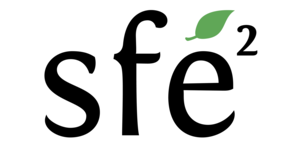Ex-situ investigation of the microbial methane and sulfur cycles dynamics towards oxidative changes in an emerged cold seep (Lagoon Pingo, Svalbard)
PI: Dimitri Kalenitchenko (Associate Professor, LIENSs, UiT, MNHN)
Supervisors: Lisa-Marie Delpech (PhD candidate, LIENSs, UiT), Postdoctoral research (UiT), Gabrielle Kleber (Postdoctoral researcher, UiT)
Duration: 6 months – January to June 2025 (flexible)
In the Arctic, past and ongoing deglaciation led to a release of ground pressure, aQecting deep geological layers where methane is stored. Since the last glacial maximum, this process has contributed to the formation of open-system pingos in the deglaciated valleys of Svalbard (Hodson et al., 2020; Kleber et al., 2023). These are hill-shaped structures formed by groundwater surfacing through the permafrost. The seeping groundwater is a significant source of methane, which escapes into the atmosphere during summer, when these systems open (Hodson et al., 2020). In glacier’s forefields, similar processes occur, forming proglacial icings (Kleber et al., 2023; Hodson et al., 2023), which also open to the atmosphere as proglacial springs in summer. The groundwater emerging from open-system pingos and proglacial icings is often reduced, with a measured negative redox potential, and saturated with methane and/or carbon dioxide. During the ice-covered period – about 70% of the year in 2023 – this groundwater becomes trapped under ice lids that form on pingos and icings.
These systems undergo oxidative changes annually or over multiple years, either through the opening of the ice lid (Hodson et al., 2019; Hodson et al., 2020) or by mixing with shallower, oxygenated waters (Kleber et al., 2024). Microbial methane oxidation occurs in anoxic and oxic conditions. While previous studies suggested that microbial oxidation is limited during winter due to anoxia (Hodson et al., 2019), recent research on groundwater microbiology suggests that anaerobic oxidation of methane (AOM) likely plays a critical role in mitigating methane emissions during the ice-covered period in open-system pingos (Delpech et al., 2024) and within deep- circulating groundwater (Kleber et al., 2024). This occurs via the activity of anaerobic methane oxidizers.
At Lagoon Pingo in Adventdalen, Svalbard, a methane-saturated and slightly pressurized reservoir forms annually under an ice lid, starting in October (Hodson et al., 2019). Delpech et al.(2024) hypothesize that this reservoir could act as a carbon sink during winter through two processes: (1) anaerobic oxidation of methane using sulfate as the electron acceptor, and (2) replenishment of sulfate through highly dynamic populations of sulfide oxidizers, which efficiently use nitrate under anoxic to microoxic conditions, along with an abiotic carbon source.
Internship Objectives
We aim to investigate the dynamics of these microbial populations ex situ to address three key questions:
1. How eQicient is winter anaerobic methane oxidation compared to summer aerobic methane oxidation?
2. How significant is the sulfur-oxidizing bacterial community that develops under the ice for replenishing the sulfate pool?
3. How does the under-ice microbial community adapt to oxidative changes?
Preliminary incubation experiments have shown that methane oxidation can be measured in incubations of winter water communities under aerobic conditions, with a time lag of approximately 12 days – similar to observations by Ricão-Canelhasetal.(2016). A second experiment tracking bacterial production under anoxic and oxic conditions showed comparable production in the two conditions, suggesting a dynamic response of the microbial community to oxygen level changes.
The internship will be based at the Arctic University of Norway (UiT, Tromsø, Norway) and involve a multidisciplinary approach focusing on microbial ecology. You will replicate incubation experiments and attempt to isolate one of the key sulfur oxidizers identified in Delpech et al. (2024) under the supervision of a postdoctoral researcher. The project will involve techniques from microbiology (e.g. incubations, cultivation), molecular ecology (e.g. nucleic acid extractions, functional PCR, qPCR, metabarcoding), and geochemistry (e.g. gas chromatography, ion chromatography, ICP-OES, nutrient analysis using a segmented-flow auto-analyzer).
Candidate Profile
We are looking for M2 candidates who are motivated to work with a wide range of techniques and have a keen interest in microbial metabolism. Basic technical skills in microbiology and molecular ecology, as well as statistical analysis (R or other software), are required. Specific training in bioinformatics and geochemistry can be provided, depending on your interests and motivation.
Contact Information
If interested, please contact:
Lisa-Marie Delpech: lisa-marie.delpech@univ-lr.fr
Dimitri Kalenitchenko: dimitri.kalenitchenko@univ-lr.fr
References
Delpech L-M, Tveit AT, Hodson AJ, Hand KP, Kalenitchenko D. Chemolithoautotrophic bacteria flourish at dark water– ice interfaces of an emerged Arctic cold seep. ISME J, 2024, wrae170, doi: 10.1093/ismejo/wrae170
Hodson AJ, Nowak A, Redeker KR, Holmlund ES, Christiansen HH, Turchyn AV. Seasonal Dynamics of Methane and Carbon Dioxide Evasion From an Open System Pingo: Lagoon Pingo, Svalbard. Front. Earth Sci, 2019, 7:30, doi: 10.3389/feart.2019.00030
Hodson AJ, Nowak A, Hornum MT, Senger K, Redeker K, Christiansen HH, et al., Sub-permafrost methane seepage from open-system pingos in Svalbard, The Cryosphere, 2020, 14:3829–3842, doi: 10.5194/tc-14-3829-2020
Hodson AJ, Kleber GE, Johnson J, Lonardi M, Petroselli C, Dixon T, Bottrell S. E]ects of glacier retreat upon glacier- groundwater coupling and biogeochemistry in Central Svalbard. J. Hydrol, 2023, 624:129894, doi: 10.1016/j.jhydrol.2023.129894
Kleber GE, Hodson AJ, Magerl L, Mannerfelt ES, Bradbury HJ, Zhu Y et al. Groundwater springs formed during glacial retreat are a large source of methane in the high Arctic. Nat. Geosci., 2023, 16:597–604. doi: 10.1038/s41561-023- 01210-6
Kleber GE, Magerl L, Turchyn AV, Redeker K, Thiele S, Liira M, et al. Shallow and deep groundwater moderate methane dynamics in a high Arctic glacial catchment. Front. Earth Sci., 2024, 12:1340399. doi: 10.3389/feart.2024.1340399
Ricão Canelhas M, Denfeld, BA, Weyhenmeyer GA, Bastviken D, Bertilsson, S. Methane oxidation at the water-ice interface of an ice-covered lake. Limnol. Oceanogr., 2016, 61:78-90. doi: 10.1002/lno.10288

Commentaires récents